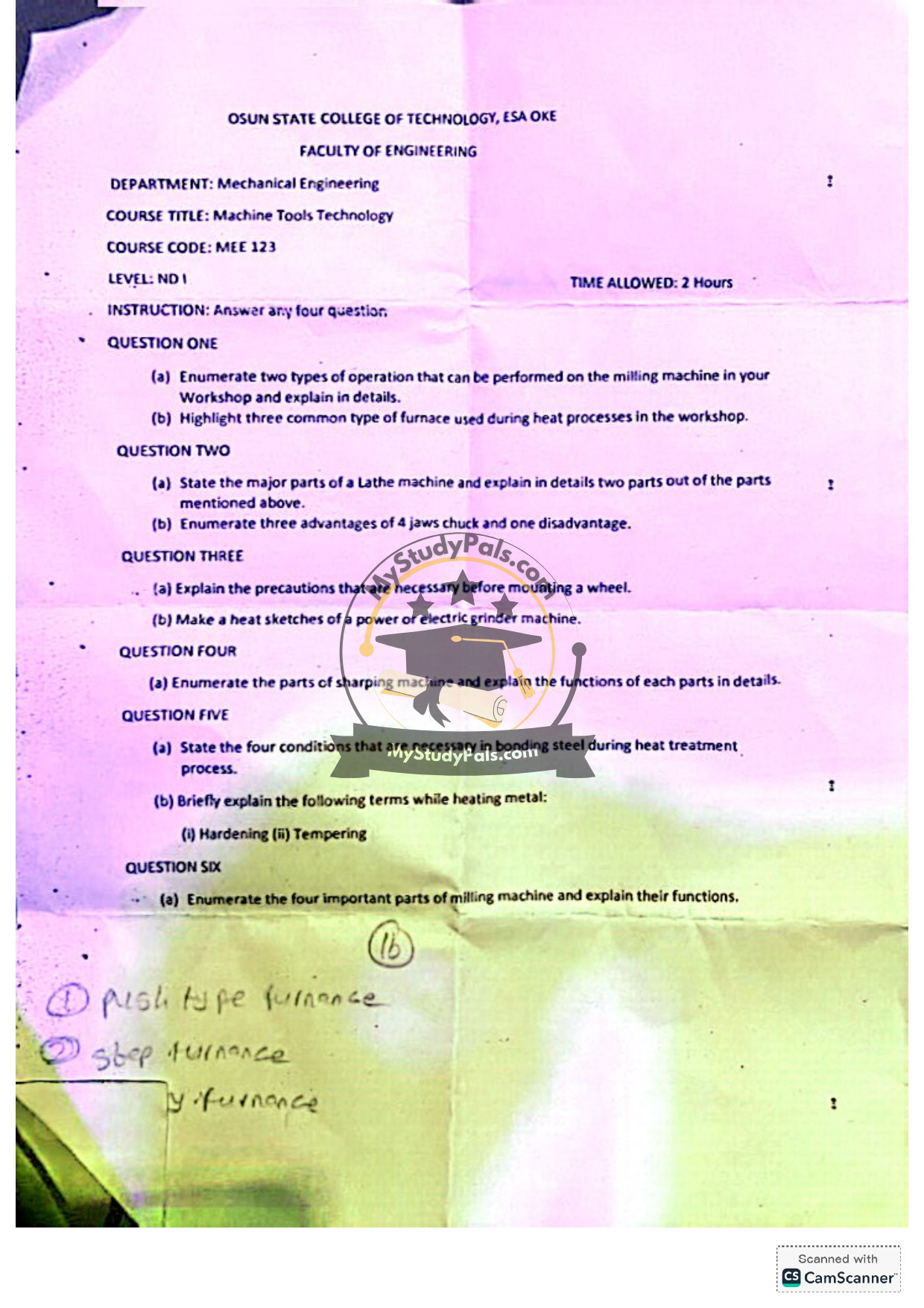ANWSER
Question 1:
(a)
Two operations performed on a milling machine:
1. Face Milling: This involves machining a flat surface perpendicular to the cutter’s axis. The cutter rotates, and the workpiece is fed against it, producing a smooth finish.
2. Slot Milling: A process where a narrow groove or slot is cut into the workpiece using a specialized slotting cutter.
(b)
Three common furnaces used in heat processes:
1. Push-Type Furnace: Workpieces are pushed through a heated chamber for continuous processing.
2. Step Furnace: Features multiple chambers with varying temperatures for sequential heat treatment.
3. Box Furnace: A versatile batch furnace used for annealing, hardening, or tempering in a sealed environment.
—
Question 2:
(a)
Major parts of a lathe machine:
– Headstock
– Tailstock
– Bed
– Carriage
– Chuck
Explained parts:
1. Headstock: Contains the spindle and motor, driving the workpiece rotation.
2. Carriage: Holds the cutting tool and moves longitudinally along the bed for machining.
(b)
Advantages of a 4-jaw chuck:
1. Can grip irregularly shaped workpieces.
2. Independent jaw adjustment for precise centering.
3. Stronger grip for heavy-duty operations.
Disadvantage: Time-consuming setup compared to 3-jaw chucks.
—
Question 3:
(a)
Precautions before mounting a wheel:
– Inspect the wheel for cracks or damage.
– Ensure the wheel’s maximum speed rating matches the machine.
– Securely tighten flanges and use safety guards.
(b)
Power Grinder Sketch Description:
A motor-driven machine with a rotating abrasive wheel, handle, adjustable tool rest, safety guard, and on/off switch.
—
Question 4:
(a)
Parts of a sharpening machine and their functions:
1. Grinding Wheel: Abrasive surface for sharpening tools.
2. Tool Rest: Supports the tool during grinding.
3. Motor: Provides rotational power to the wheel.
4. Coolant System: Reduces heat buildup to prevent tool damage.
—
Question 5:
(a)
Conditions for bonding steel during heat treatment:
1. Correct austenitizing temperature.
2. Adequate soaking time.
3. Proper quenching medium (e.g., oil, water).
4. Controlled atmosphere to prevent oxidation.
(b)
– Hardening: Heating steel above critical temperature and rapidly cooling (quenching) to increase hardness.
– Tempering: Reheating hardened steel to a lower temperature to reduce brittleness and improve toughness.
—
Question 6:
(a)
Four important parts of a milling machine:
1. Column: Vertical structure supporting the machine’s components.
2. Knee: Adjusts vertical position for depth control.
3. Saddle: Moves crosswise on the knee for horizontal adjustments.
4. Table: Holds and positions the workpiece during machining.


